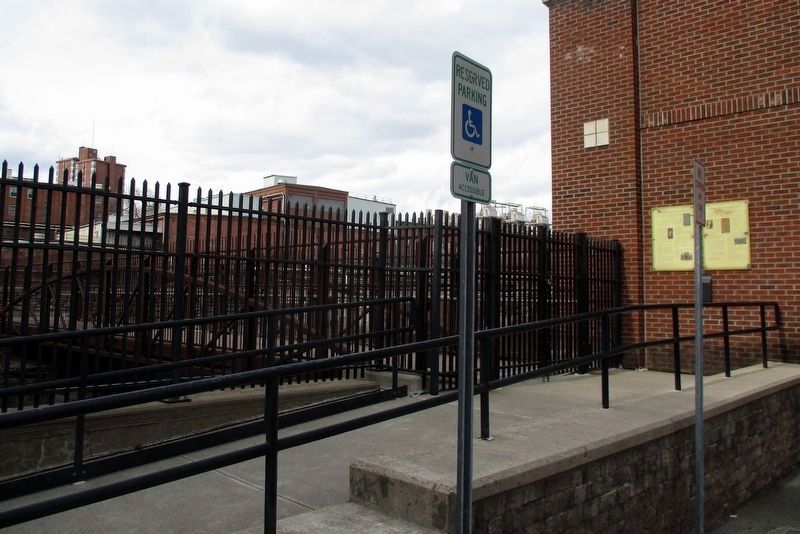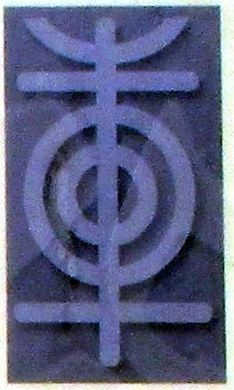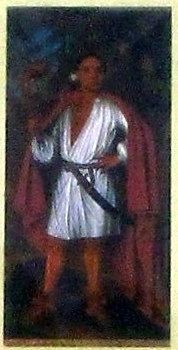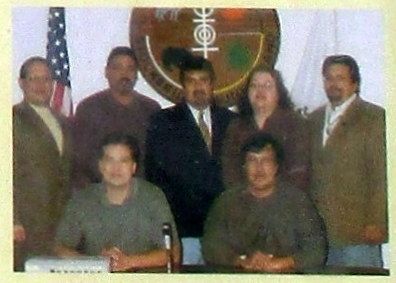South Glens Falls in Saratoga County, New York — The American Northeast (Mid-Atlantic)
The Mohican Nation – Yesterday and Today
”The Mohicans were the possessors of the country first occupied by the Europeans in this portion of the continent. They were, consequently, the first dispossessed; and the seemingly inevitable fate of all these people…is represented as having already befallen them.”
James Fenimore Cooper, 1831 Introduction to The Last of the Mohicans
In addition to the trials and injustices they shared with other Native Americans, the Mohican Nation has borne as additional burden. Because of the title of Cooper’s famous novel, the world has often thought them to be extinct. Happily, Cooper’s prediction was wrong, and as we restore access to a famous scene from The Last of the Mohicans, we also bear witness that the Mohican Nation is alive and well.
Origins The Muh-he-ka-ne-ok or Mohican (sometimes spelled Manican) people came in ancient times to the shores of the Hudson River which they called the Majicannituck or “River whose Waters are Never Still.”
Related to the Lenne Lenapi (Delaware) and other Algonquian-speaking peoples to their south, the Mohicans built villages of longhouses near the rivers of longhouses near the rivers that were central to their way of life. They hunted and fished, grew crops, and celebrated traditional festivals from Lake Champlain to the southern reaches of the Hudson valley.
They taught their children the history, customs, and beliefs of their nation – as they continue to do today.
Coming of the Dutch Hendrick Hudson sailed up the river in 1609, and soon Beverwijck (Albany) became a major trading post where Mohicans exchanged furs for the clothing, utensils and firearms they did not produce themselves. A war with the Mohawk Nation of the Iroquois Confederacy in 1625 deprived the Mohicans of much of their lands west of the Hudson. In 1792 a Mohican historian, Hendrick Aupaumut, recorded his Nation’s history.
Many Trails The Mohican people were not allowed to live in peace in the lands of their ancestors, Some, converted by missionaries of the Moravian church, joined other Christian Indians in Pennsylvania – and years later shared their fate in the massacre at Gnadenhutten in 1782.
Stockbridge Other Mohicans decided to adopt Western ways of living. In 1734 they established the Town of Stockbridge, in Western Massachusetts. There they lived, attended school, managed their affairs, and during the American Revolution fought alongside their Yankee brothers.
New Stockbridge When Mohican soldiers returned to Stockbridge after the revolution, they were not welcomed by the White Man. Under increasing pressure, both racist and economic, most Mohicans
moved in 1785 to New York State. On lands in Madison County provided by the Iroquois Oneida Nation, they built New Stockbridge.,
Wisconsin By 1818 the Mohicans of Stockbridge had to move again, as hostility against them increased in New York State. They explored several possible homes further west. Most of them, joined by Munsees (Delawares) from the lower Hudson, went to Wisconsin, where they eventually obtained the Reservation in which they live today at Bowler in Shawano County.
Mohicans Today Today some 1500 Mohicans live in or near the Reservation of the “Stockbridge Munsee Band of the Mohican Nation.” Others are scattered throughout the United States.
Like other Native American groups, they attract tourist dollars through the Mohican North Star Casino and the Pine Hills Golf Club. For themselves they operate extensive community services.
Mohican writers, artists, and musicians share their culture with the rest of America.
Topics. This historical marker is listed in these topic lists: Colonial Era • Native Americans • Settlements & Settlers • War, US Revolutionary. A significant historical year for this entry is 1831.
Location. 43° 18.335′ N, 73° 38.43′ W. Marker is in South Glens Falls, New York, in Saratoga County. Marker can be reached from Cooper's Cave Drive north of River Street, on the right when traveling north. The marker is at the end of the Cooper's Cave Drive pedestrian spur that runs under the Cooper's Cave Bridge. Touch for map. Marker is in this post office area: South Glens Falls NY 12803, United States of America. Touch for directions.
Other nearby markers. At least 8 other markers are within walking distance of this marker. Glens Falls and James Fenimore Cooper (here, next to this marker); The South Glens Falls Hydroelectric Project (a few steps from this marker); Cooper’s Cave (within shouting distance of this marker); Glens Falls/Chepontuc (about 500 feet away, measured in a direct line); The onetime Dr. James Ferguson Office (approx. 0.4 miles away); Weber Furlong (approx. 0.4 miles away); 18th Separate Company Armory (approx. 0.4 miles away); Glens Falls War Memorial (approx. 0.4 miles away). Touch for a list and map of all markers in South Glens Falls.
Also see . . . Mohicans. Wikipedia entry (Submitted on April 20, 2020, by Larry Gertner of New York, New York.)
Credits. This page was last revised on April 24, 2020. It was originally submitted on April 20, 2020, by Larry Gertner of New York, New York. This page has been viewed 479 times since then and 65 times this year. Photos: 1, 2, 3, 4, 5. submitted on April 20, 2020, by Larry Gertner of New York, New York. • Michael Herrick was the editor who published this page.




